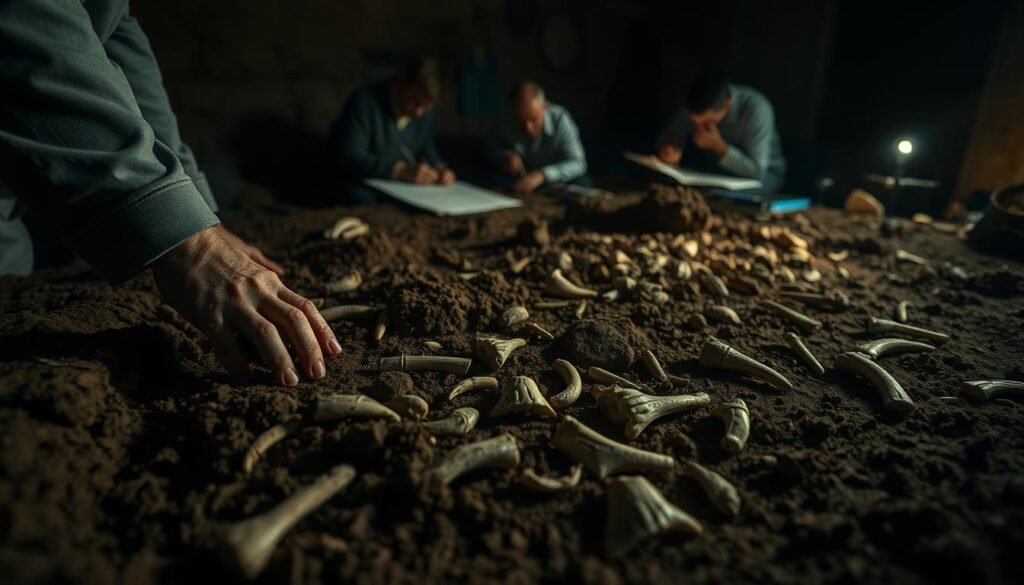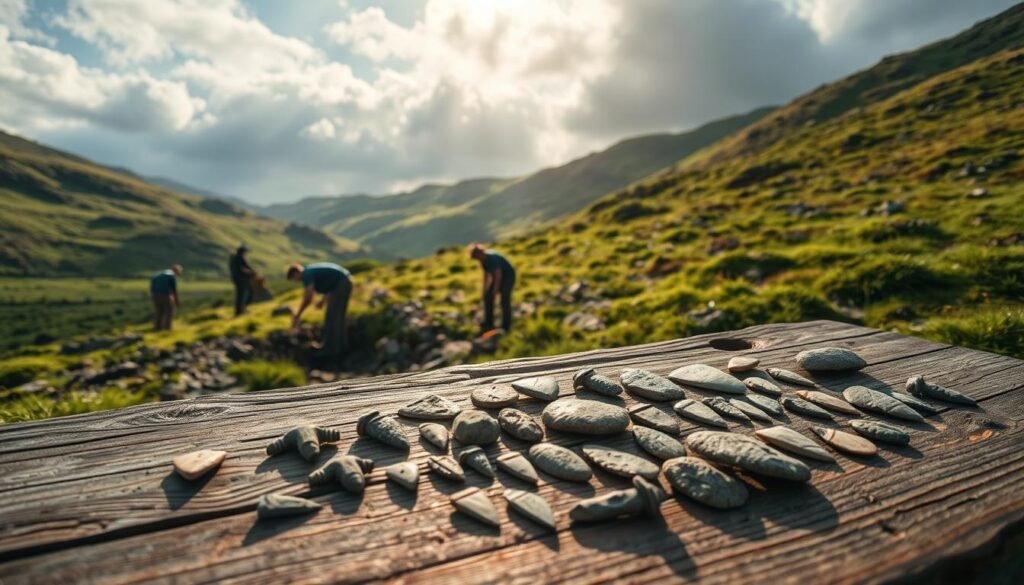Imagine holding an object made by human hands millions of years ago. These incredible tools tell stories about our ancestors’ intelligence and survival skills.
Recent archaeological discoveries are rewriting history books. Researchers keep finding amazing evidence that changes what we thought about early humans.
Some artifacts date back millions of years, creating excitement in scientific communities. Each finding helps solve pieces of our evolutionary puzzle.
The mystery surrounding these breakthroughs makes archaeology news worth following. You’ll discover how these objects connect directly to modern human innovation.
Key Takeaways
- Ancient tools reveal groundbreaking information about early human intelligence
- Archaeological discoveries continuously change our understanding of history
- Some artifacts date back millions of years, showing incredible time spans
- Researchers use these findings to reconstruct our evolutionary journey
- These discoveries aren’t just academic—they’re fundamental to human development
- Each tool discovery contributes to the larger story of technological advancement
- Ancient artifacts show direct connections to modern human innovation
Ancient Tools Reveal Surprising Cognitive Abilities in Early Humans
Think about finding something crafted by our human ancestors over two million years back. These aren’t just old rocks. They’re proof of smart minds at work.
Recent archaeology work shows us something amazing. Our early hominins were thinking ahead way earlier than we knew.
2.6 Million-Year-Old Stone Tools Show Advanced Planning
Archaeologists made a huge discovery at a dig site. They found stone tools that are 2.6 million years old.
This pushes back the timeline for complex thinking by 600,000 years. Our human relative from long ago could plan for the future.
These tools made by hand show careful selection. They picked the right stones for the job. This wasn’t random bashing.
How Early Hominins Thought About Tool Making
So how did researchers figure this out? A close study of the tools found tells the story.
Each tool had a specific purpose. They were crafted to help with tasks like processing animal hides or breaking bones.
This means our ancestors could anticipate needs. They didn’t just react. They prepared tools in advance.
This finding is a big part of understanding our past. It shows sophisticated minds at work 2.6 million years ago.
These planning skills eventually led to more advanced technologies. It’s where our innovation story truly begins.
The Bone Tool Revolution: Rewriting Human Technological History
Picture yourself holding a carefully shaped bone tool crafted 1.5 million years ago. This isn’t just an old artifact. It’s evidence of a massive leap in early human innovation.
Archaeologists made a stunning find at Olduvai Gorge. They uncovered 27 shaped bone tools that completely change our timeline.

These aren’t random broken bones. They show deliberate craftsmanship from our hominin ancestors. This finding pushes back systematic bone tool production by over a million years.
1.5 Million-Year-Old Bone Tools From Olduvai Gorge
Dr. Ignacio de la Torre’s team made this incredible discovery. The tools discovered measured between 18-38 centimeters long.
They came from dense limb bones of elephants and hippopotamuses. This choice shows understanding of material strength.
Both Homo erectus and Paranthropus boisei lived in this area during that period. Either species could have created these advanced implements.
Transferring Stone Knapping Skills to Bone Materials
Early hominins demonstrated amazing cognitive flexibility. They applied stone-working techniques to entirely different materials.
This skill transfer shows advanced problem-solving abilities. Our ancestors understood that different materials require similar shaping methods.
As Dr. Renata Peters notes:
This demonstrates a level of complex cognition not seen elsewhere for another million years.
What These Tools Tell Us About Early Hominin Capabilities
These finds reveal sophisticated thinking in our hominin relatives. They could:
- Select appropriate raw materials for specific tasks
- Apply learned techniques to new challenges
- Plan and execute multi-step manufacturing processes
- Create tools for specialized purposes like carcass processing
The technology represents a major expansion of early human capabilities. Homo erectus and contemporary hominins were far more innovative than previously believed.
This discovery prompts archaeologists to re-examine bone artifacts worldwide. Many might show similar advanced work that was previously overlooked.
Our understanding of human evolution keeps growing with each new find. These bone tools open exciting chapters in our ancestral story.
Regional Discoveries: Ancient Tools Across the Globe
Now let’s travel to Scotland’s rugged landscapes where another amazing story unfolds. You’ll discover how early humans conquered icy frontiers with clever adaptations.
This journey takes us 11,500 years ago to a time of great change. Brave pioneers ventured into unknown territories with their essential tools.

Scotland’s 11,500-Year-Old Tools and Early Settlement
Researchers made an incredible finding on Scotland’s Isle of Skye. They uncovered the oldest evidence of human settlement in this northern region.
The international research team, led by Karen Hardy, studied these remarkable artifacts. Their work represents a major part of understanding early human expansion.
This discovery shows the largest concentration of proof for early human presence in northwest Scotland. Each artifact tells a story of survival and adaptation.
The Journey of Nomads to Icy Landscapes
Imagine following animal herds across changing landscapes 11,500 years ago. These nomads traveled from the northwestern Great European Plains to Scotland’s icy terrain.
They likely crossed via Doggerland, an area now under the North Sea. This happened during the Late Upper Paleolithic period after the Younger Dryas cooling.
Pioneers faced cataclysmic landscape changes during their northward movement. Their journey represents what archaeologists call the “ultimate adventure story.”
Adapting Tools to Different Environments and Needs
Early humans showed remarkable flexibility with their tools. They adapted technologies to suit new environments and survival needs.
These settlers strategically chose locations near coastal and riverine resources. They valued materials like ochre pigment for various purposes.
The tools found at the site demonstrate sophisticated environmental understanding. Our ancestors developed technologies perfectly suited to their challenging new home.
This archaeology news helps us appreciate human resilience. It shows how early people transformed their tools to thrive in extreme conditions.
Conclusion: What Ancient Tools Teach Us About Our Ancestors
Picture this: our ancestors were smart problem-solvers. They used clever tools to survive and thrive millions of years ago.
Recent research shows these innovations appeared much earlier than we thought. Our human relatives planned ahead and adapted their skills across different materials.
Evidence from every site tells the same story. Early humans in every region showed remarkable creativity. This technology was a key part of their success.
You’ve seen how researchers piece together our past. Each discovery helps us understand our species‘ incredible journey through time.






